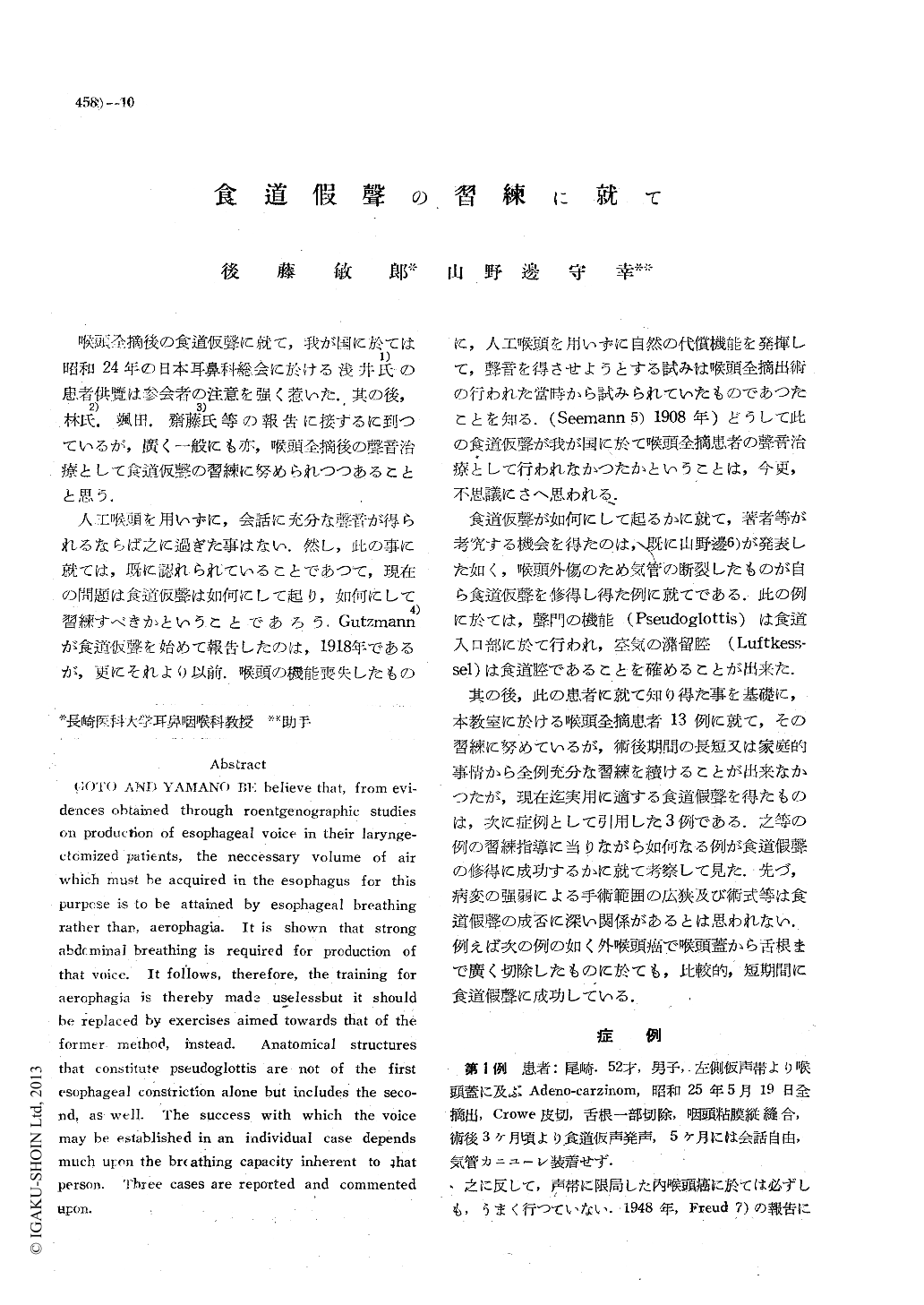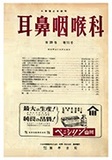- 有料閲覧
- 文献概要
- 1ページ目
喉頭全摘後の食道仮聲に就て,我が国に於ては昭和24年の日本耳鼻科総会に於ける浅井氏1)の患者供覽は参会者の注意を強く惹いた.其の後,林氏2).颯田.齋藤氏3)等の報告に接するに到つているが,廣く一般にも亦,喉頭全摘後の聲音治療として食道仮聲の習練に努められつつあることと思う.
人工喉頭を用いずに,会話に充分な聲音が得られるならば之に過ぎた事はない.然し,此の事に就ては,既に認れられていることであつて,現在の問題は食道仮聲は如何にして起り,如何にして習練すべきかということであろう.Gutzmann4)が食道仮聲を始めて報告したのは,1918年であるが,更にそれより以前.喉頭の機能喪失したものに,人工喉頭を用いずに自然の代償機能を発揮して,聲音を得させようとする試みは喉頭全摘出術の行われた當時から試みられていたものであつたことを知る.(Seemann5)1908年)どうして此の食道仮聲が我が国に於て喉頭全摘患者の聲音治療として行われなかつたかということは,今更,不思議にさへ思われる.
GOTO AND YAMANOBE believe that, from evi-dences obtained through roentgenographic studies on production of esophageal voice in their larynge-ctomized patients, the neccessary volume of air which must be acquired in the esophagus for this purpose is to be attained by esophageal breathing rather than, aerophagia. It is shown that strong abdominal breathing is required for production of that voice. It follows, therefore, the training for aerophagia is thereby made uselessbut it should be replaced by exercises aimed towards that of the former method, instead. Anatomical structures that constitute pseudoglottis are not of the first esophageal constriction alone but includes the seco-nd, as well. The success with which the voice may be established in an individual case depends much upon the breathing capacity inherent to that person. Three cases are reported and commented upon.

Copyright © 1951, Igaku-Shoin Ltd. All rights reserved.


